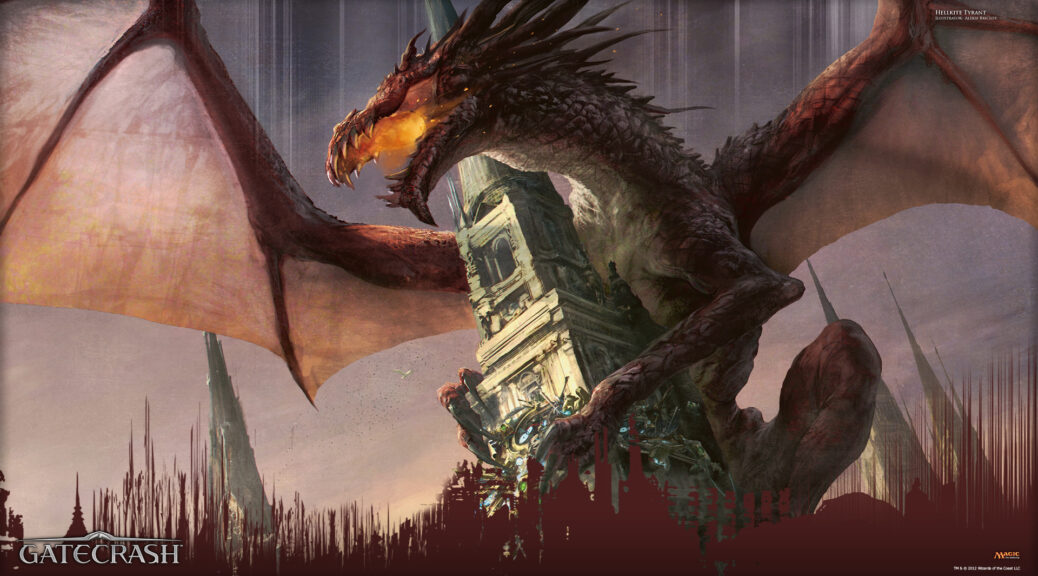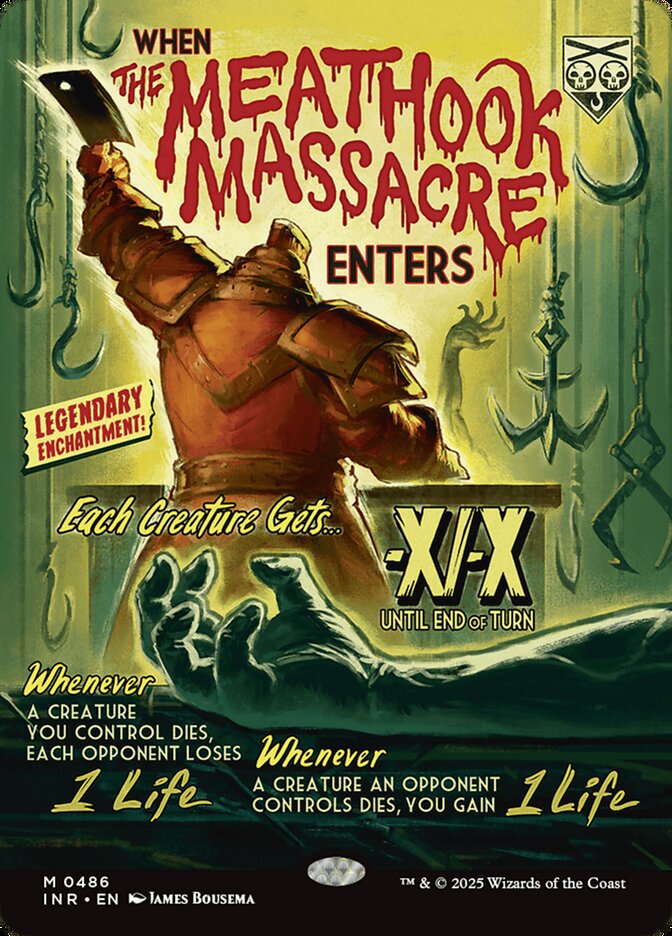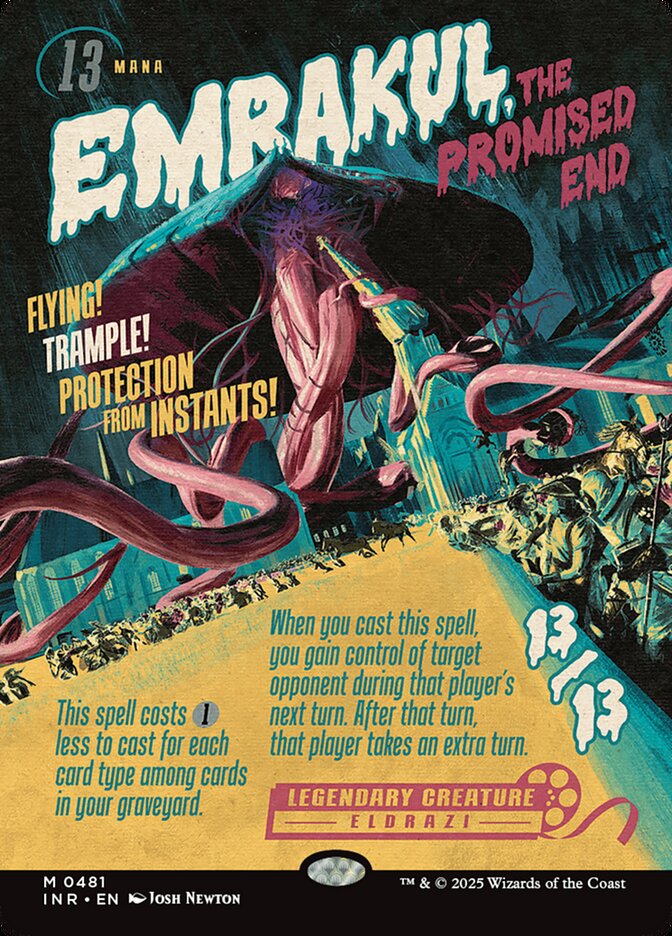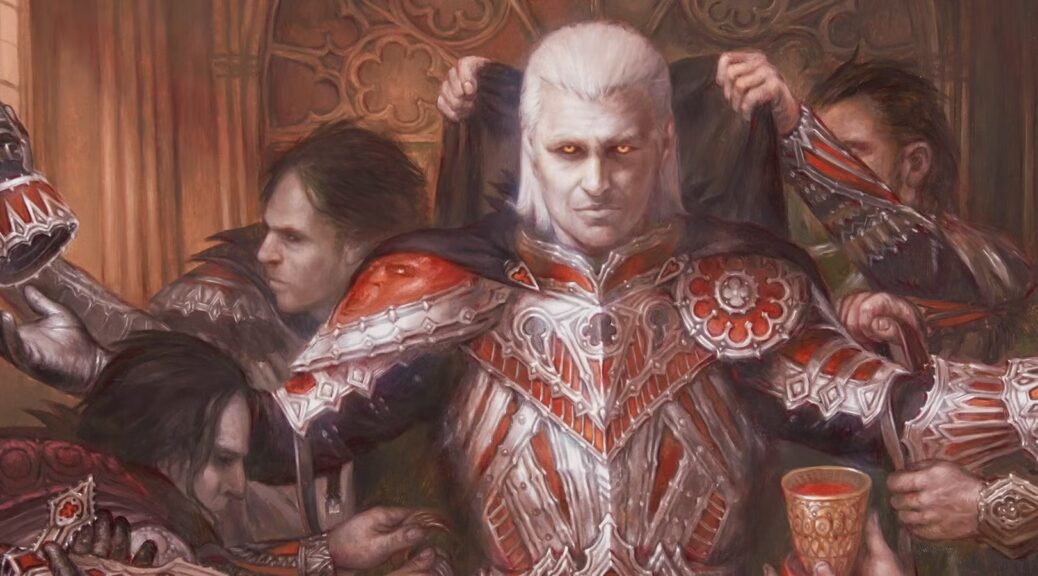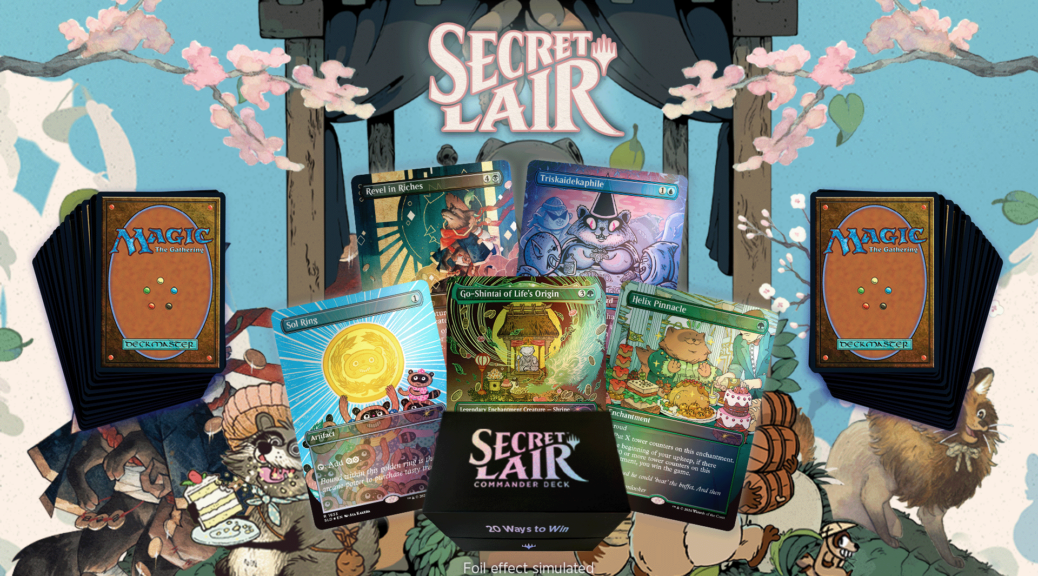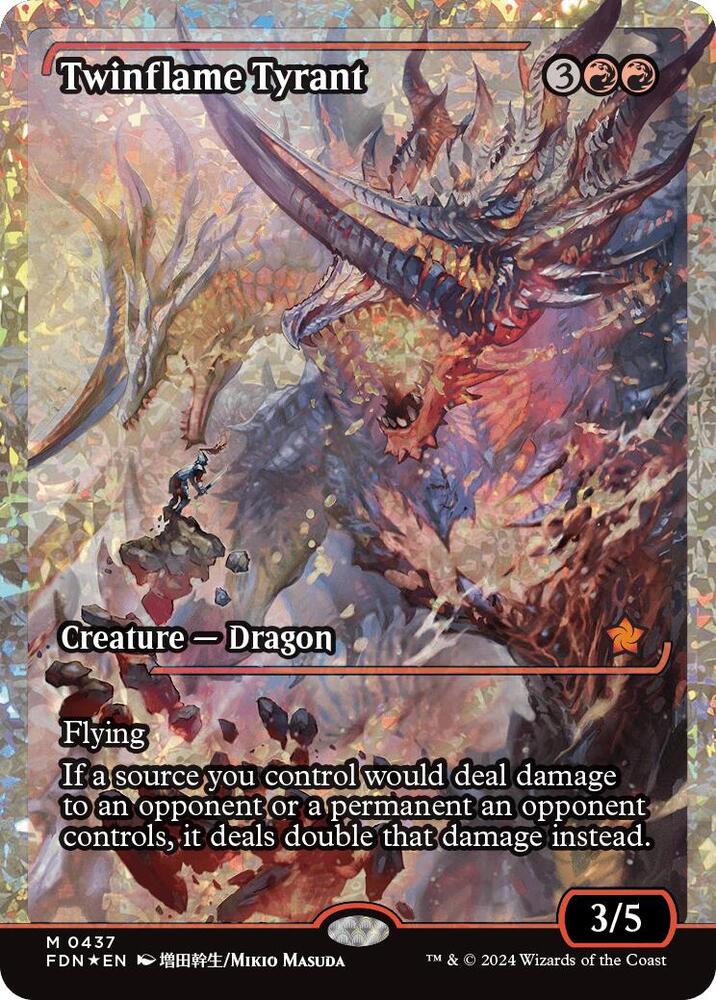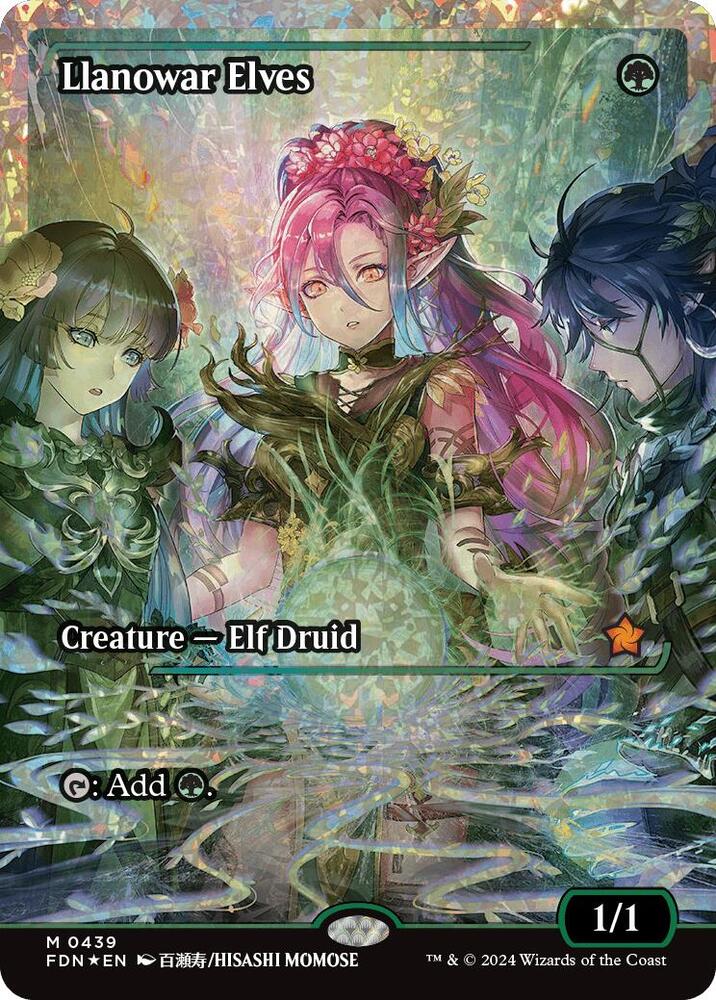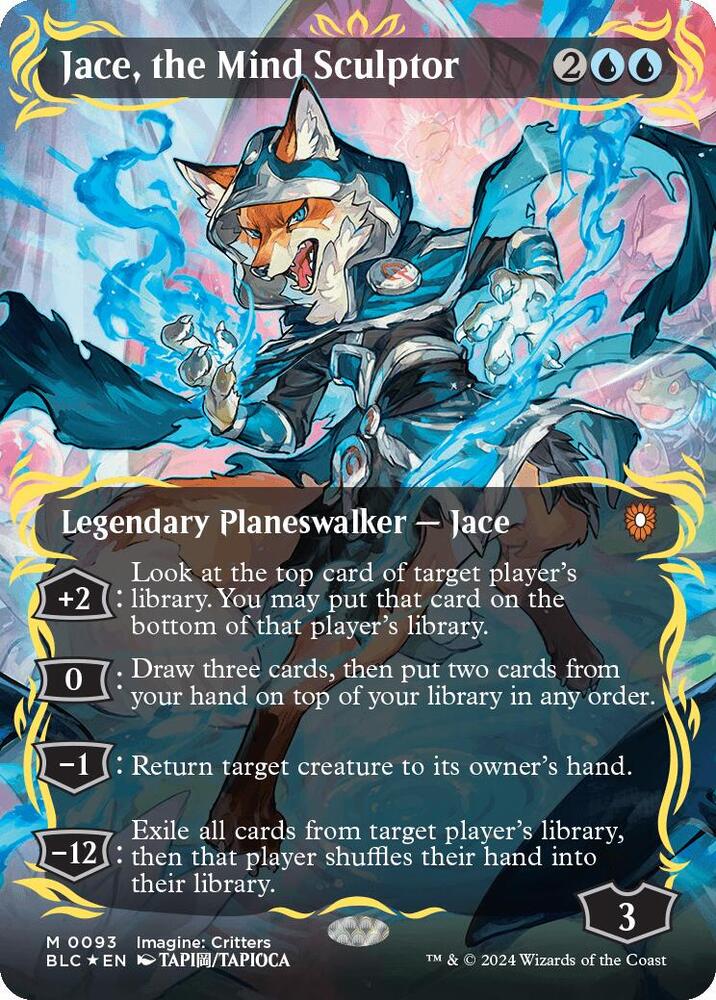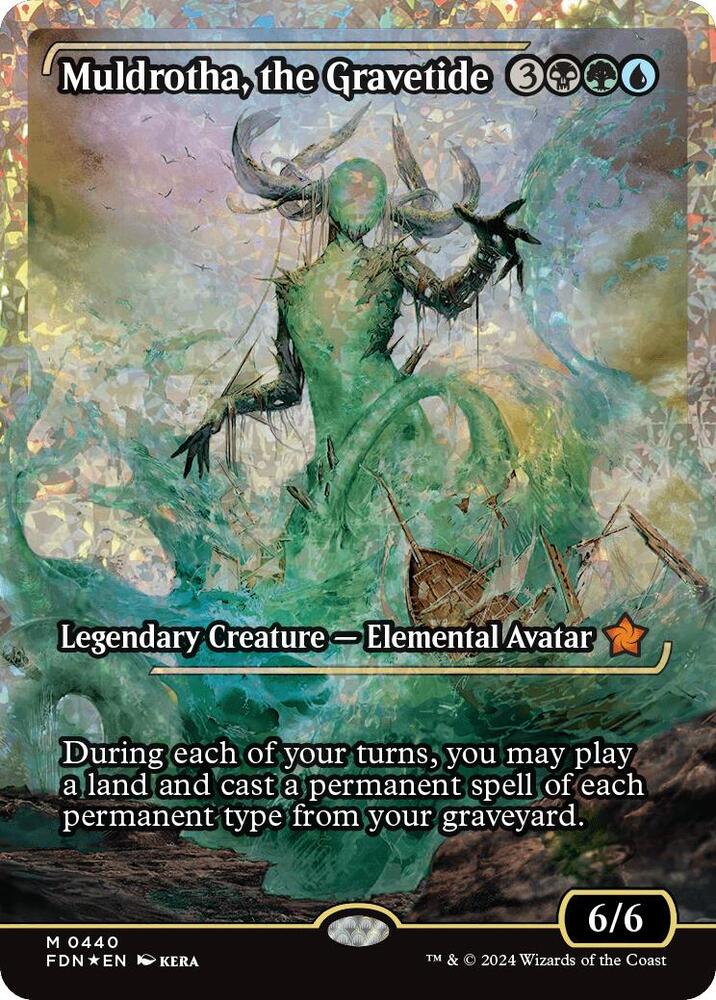You might be thinking something like ‘We don’t even know all the cards in this set yet, and this guy is calculating odds and how many there are and what to target already?’
And the answer, clearly, is yes.
Given what we know, we can make more than a few suppositions, and estimate where would be a good place to make some plans.
So last week, I laid out that my estimate for the print run is 1.25 million packs.
With some more research, and conversation, and distributors, I’m revising that to double the print run, at 2.5 million Collector Booster packs. The numbers after this paragraph have been edited to reflect that new estimate.
With that number, we can say how many of a certain card *should* be out there. This presumes that every pack finds it hands into customers’ hands, which is not a given.
What we can glean, though, is going to do a lot for our expectations. Let’s look again at the categories of cards in the last three slots. First, the two nonfoil slots:
| Nonfoil Category | # of packs to open one specific card from that category | Final odds (divided by two, because there’s two slots!) | Times $30/pack to get cost/copy |
| Movie Poster Rare or Mythic Rare (10) | 114.94 | 57.47 | $1,724.14 |
| Retro Frame (24) | 57.55 | 28.78 | $863.31 |
| Retro Frame Mythic Rare (12) | 81.08 | 40.54 | $1,216.22 |
| Other Booster Fun Rare (17) | 57.43 | 28.72 | $861.49 |
| Other Booster Fun Mythic Rare (6) | 115.38 | 57.69 | $1,730.77 |
And as a reminder, the foil slot:
| Traditional Foil (unless noted otherwise) | # of packs to open one specific card from that category | Times $30/pack to get cost/copy |
| Movie Poster (10) | 100.00 | $3,000.00 |
| Retro Frame Rare (24) | 58.39 | $1,751.82 |
| Retro Frame Mythic Rare (12) | 82.19 | $2,465.75 |
| Borderless, Showcase Equinox, or Showcase Fang Rare (17) | 58.22 | $1,746.58 |
| Borderless, Showcase Equinox, or Showcase Fang Mythic Rare (6) | 117.65 | $3,529.41 |
Now, that data is useful, as these cards aren’t tough to pull. We know that already. But when you add in the 2.5 million as the number of packs, then we get the approximate number of copies out there…and that’s illuminating indeed. Data is useful, as these cards aren’t tough to pull. We know that already. But when you add in the 2.5 million as the number of packs, then we get the approximate number of copies out there…and that’s illuminating indeed.
| # of packs to get a copy (approx.) | # of copies out there (approx.) | |
| Nonfoil Category | ||
| Movie Poster Rare or Mythic Rare (10) | 57.47 | 43500.96 |
| Retro Frame (24) | 28.78 | 86865.88 |
| Retro Frame Mythic Rare (12) | 40.54 | 61667.49 |
| Other Booster Fun Rare (17) | 28.72 | 87047.35 |
| Other Booster Fun Mythic Rare (6) | 57.69 | 43335.07 |
| Traditional Foil (unless noted otherwise) | ||
| Movie Poster (10) | 100 | 25000.00 |
| Retro Frame Rare (24) | 58.39 | 42815.55 |
| Retro Frame Mythic Rare (12) | 82.19 | 30417.33 |
| Borderless, Showcase Equinox, or Showcase Fang Rare (17) | 58.22 | 42940.57 |
| Borderless, Showcase Equinox, or Showcase Fang Mythic Rare (6) | 117.65 | 21249.47 |
So let’s start with the movie posters, as we know two of them already: Emrakul, the Promised End and The Meathook Massacre.
Both of these are already expensive cards in their own right, and therefore start out as quite pricey cards, especially in foil. However, given the quantity out there, I think there will be a downward trend for these over time. Let’s do a comparison for the nonfoils.
| Card | # of copies | EDHREC usage | Price |
| Hellkite Tyrant (Retro Frame Serialized) | 500 | 90,000 decks | $185 (started at $260) |
| Emrakul, the Promised End | ~43,500 | 44,000 decks | $50/$100 (projected) |
| The Meathook Massacre | ~43,500 | 125,000 decks | $75/$130 (projected) |
Emrakul is currently at $45 and will drop some in price for the regular frame, but the movie poster version should end up at $60 or so, with the foil being at or near $100. I think Meathook’s popularity will bode well over time, but the initial price is just too wild. It’s $90+ and should slowly decline in price. I’ll need a couple for my decks, but these cards will come down as time passes.
If we knew the other movie poster cards we could make estimations of those prices as well, but for now, we’re just speculating.
The movie posters are slightly more common than the alternate frame mythics, but I have little faith in non-serialized Edgar Markov’s price long-term. Everyone who wants a Vampire deck will be able to get one, and while he’s a fantastic Commander with a broken ability (Eminence is pretty damn overpowered) he’s going to have trouble keeping regular nonfoils over $30. We’re getting Showcase, Retro, and Regular frames, plus the serialized version, which will attract the big spenders.
We do know some of the retro frame cards, like Snapcaster, Liliana of the Veil, or Meathook, and sadly, I don’t think that these are going to be particularly chase versions. Retro frame was a really cool thing when it first happened but compared to the borderless versions we get, these are just not as desired unless they are super-rare or serialized. The prices bear this out, as evidenced by super-staples like Cyclonic Rift or Rhystic Study.
As more cards get previewed from this set, we’ll get better information, but for right now, this is what we’ve got and this will help us manage the new-set-frenzy that might come up.
Cliff (@WordOfCommander at Twitter and BlueSky) has been writing for MTGPrice since 2013, and is an eager Commander player, Draft enthusiast, and Cube fanatic. A high school science teacher by day, he’s also the co-host of the MTG Fast Finance podcast. If you’re ever at an event and you see a giant flashing ‘CUBE DRAFT’ sign, go over, say hi, and be ready to draft.
